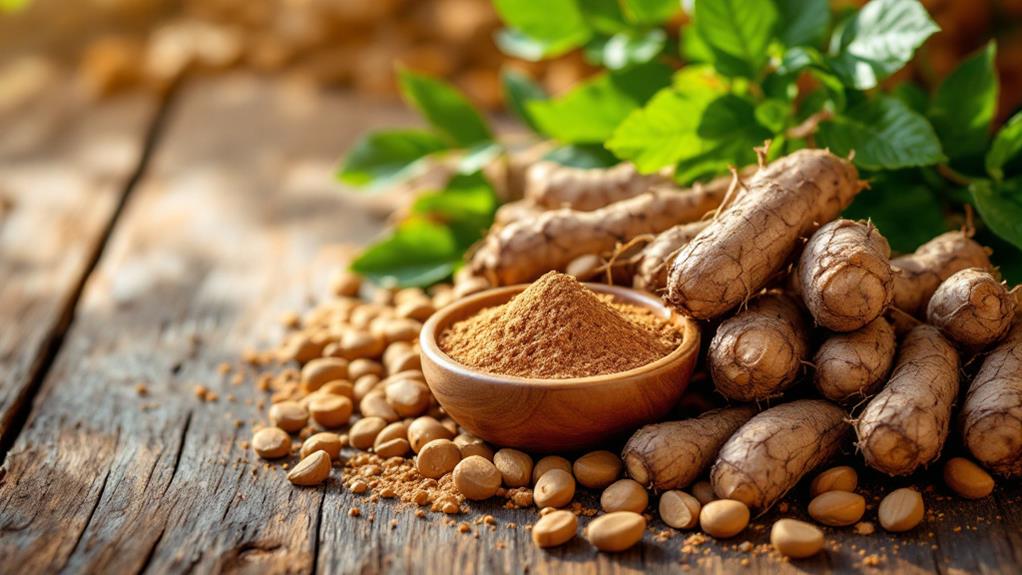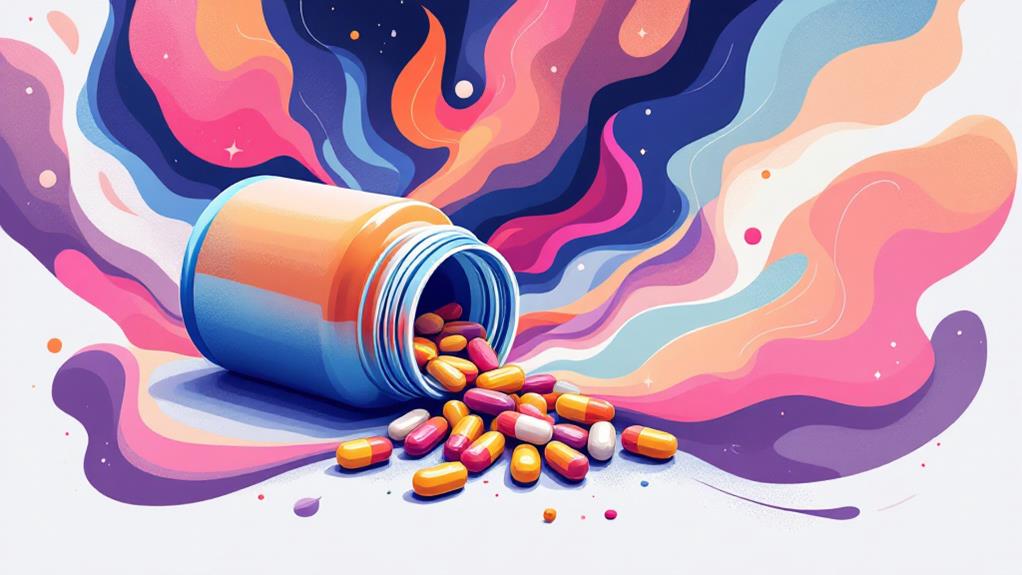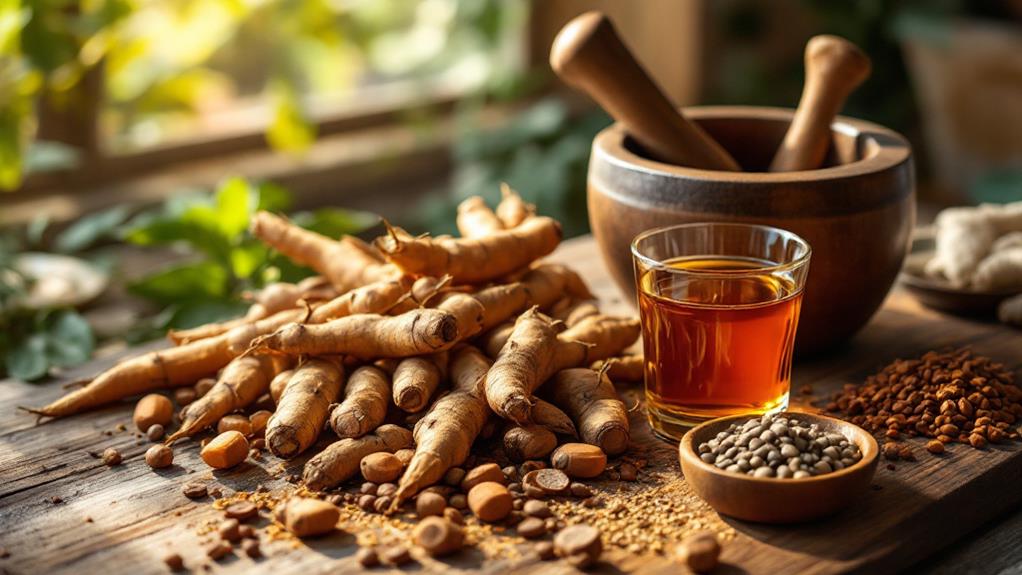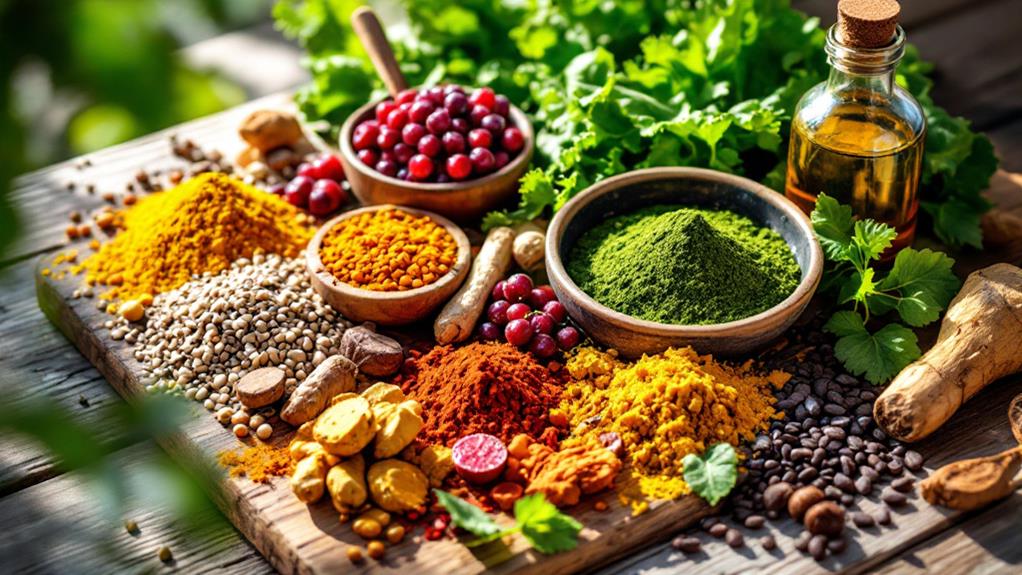What Are Food Dyes? Understanding Their Role in Processed Foods
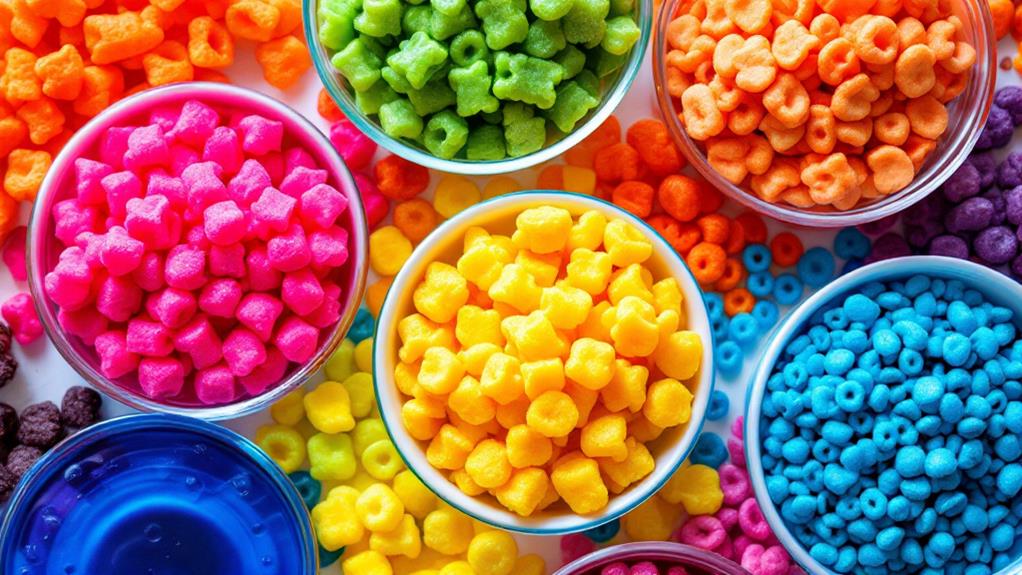
You're surrounded by food dyes that improve the look of processed foods, making them more tempting. These dyes can be natural, derived from plants or minerals, or synthetic, created through chemical processes. Bright colors not only correct color loss in foods but also influence your perception of flavor and quality. While synthetic dyes are common and undergo rigorous regulation, some people prefer natural options due to health concerns. Children's sensitivity to certain artificial dyes has sparked debate and regulatory action. To understand how these colorful additives impact your food choices and health, there's much more to uncover.
Definition and Purpose
When you think about what makes your favorite snacks or drinks so visually appealing, food dyes often play a key role. These color additives are substances added to food products to improve their visual appeal. They come from both natural sources, like plants and minerals, and synthetic origins, which are regulated by the FDA. Natural food sources might include beet juice or turmeric, while artificial food coloring is typically derived from chemical compounds.
The primary purpose of food dyes is to correct color loss caused by factors like exposure to light, moisture, or variations in food processing. They also provide lively hues to otherwise colorless or fun food items, influencing your perception of flavor, quality, and overall attractiveness. For instance, a brightly colored candy might seem more flavorful compared to a dull one, even if the taste remains unchanged.
However, it's significant to be aware of potential health effects. While most food dyes are deemed safe by regulatory bodies, some individuals might have sensitivities or allergies to certain artificial food coloring. Understanding the purpose and origin of these color additives helps you make informed choices about the foods you consume.
Types of Food Dyes
Food dyes come in two main types: artificial and natural. Artificial coloring is synthetic and strictly regulated by the FDA, with 9 approved for use in the U.S., including popular ones like Red No. 40, Yellow No. 5, and Yellow No. 6. These food dyes are favored in the industry for their lively colors, cost-effectiveness, and stability, making them prevalent in processed foods. However, while they add appeal to products, they also raise health concerns for some consumers due to their synthetic nature.
On the other hand, natural dyes are derived from plant, mineral, or animal sources. Examples include beta-carotene from carrots and anthocyanins from berries. These natural food dyes are often considered healthier alternatives, although they can still cause allergenic reactions in some individuals. Unlike artificial dyes, natural dyes don't require batch certification, but they may be less lively and stable, potentially impacting processed food's appearance over time.
While the FDA approves 36 food dyes in total, with 9 being artificial, the European Food Safety Authority (EFSA) approves 39, including some banned in the U.S. These regulatory differences highlight the complexities surrounding food additives and their impact on health.
Synthetic Vs Natural Dyes
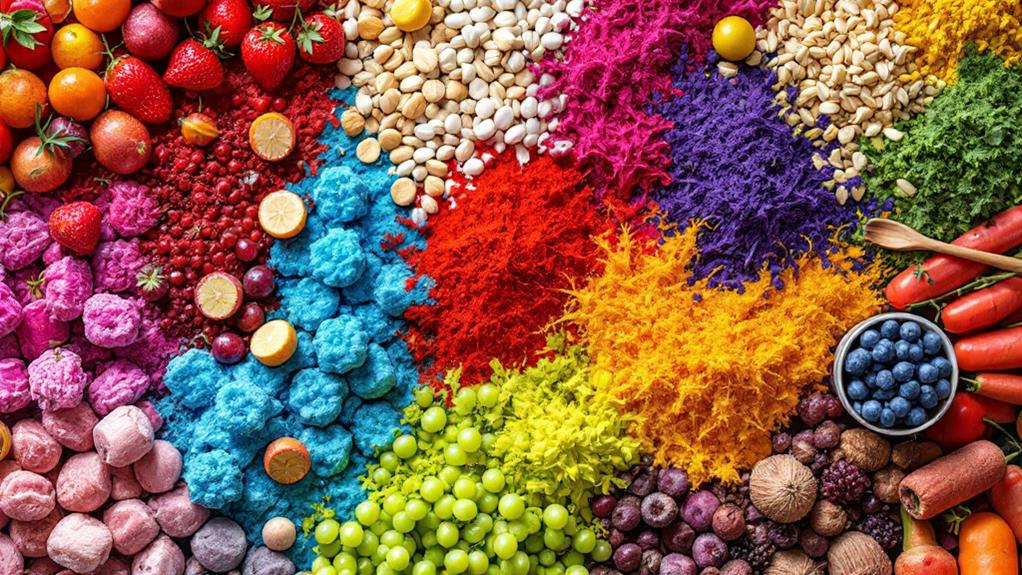
Why do consumers and manufacturers increasingly lean towards natural dyes over synthetic ones? It often boils down to concerns about health risks and a growing desire for natural food dyes. Synthetic food dyes like Red No. 40 and Yellow No. 5 are artificial food colors created in labs. Though they are rigorously regulated by the FDA and require batch certification, they are linked to potential behavioral effects in children. This association has nudged many to seek out food products that use natural alternatives.
Natural food dyes, on the other hand, come from sources like plants, minerals, or animals. They don't need batch certification but still must meet FDA identity and purity standards. Examples include annatto extract and beta-carotene. There's a perception that these dyes are safer, but they aren't without their own health risks. For instance, cochineal extract can cause allergic reactions in some people.
Despite natural dyes often being more expensive and less stable than their synthetic counterparts, they're gaining popularity. This trend is reflected in the availability of numerous natural dyes, while only seven synthetic ones are FDA-approved. Consumers' preference for natural ingredients is reshaping the landscape of processed foods.
Regulatory Overview
Under the framework of the FDA, color additives in the U.S. face stringent regulations to guarantee consumer safety. These regulations require thorough safety assessments and batch certifications for synthetic dyes. The FDA's regulatory framework guarantees that each artificial food color, like Red No. 40 and Yellow No. 5, undergoes rigorous evaluation before approval. As of 2022, 36 food dyes have earned FDA approval, nine of which are artificial.
The Color Additive Amendments of 1960 established the foundation for these safety evaluations, mandating that no carcinogenic additives be used, as per the Delaney Clause. This guarantees that any food additives you consume meet strict safety standards. Curiously, differences exist between the FDA and the European Food Safety Authority (EFSA), with EFSA approving 39 food dyes, some not allowed in the U.S.
To enforce these regulations, the FDA can issue warning letters or seize products that violate guidelines, such as those containing undeclared color additives. So, when you encounter lively, artificially colored foods, you can trust that the FDA's regulatory framework and safety assessments work to protect your health and guarantee the additives are safe for consumption.
Health Considerations
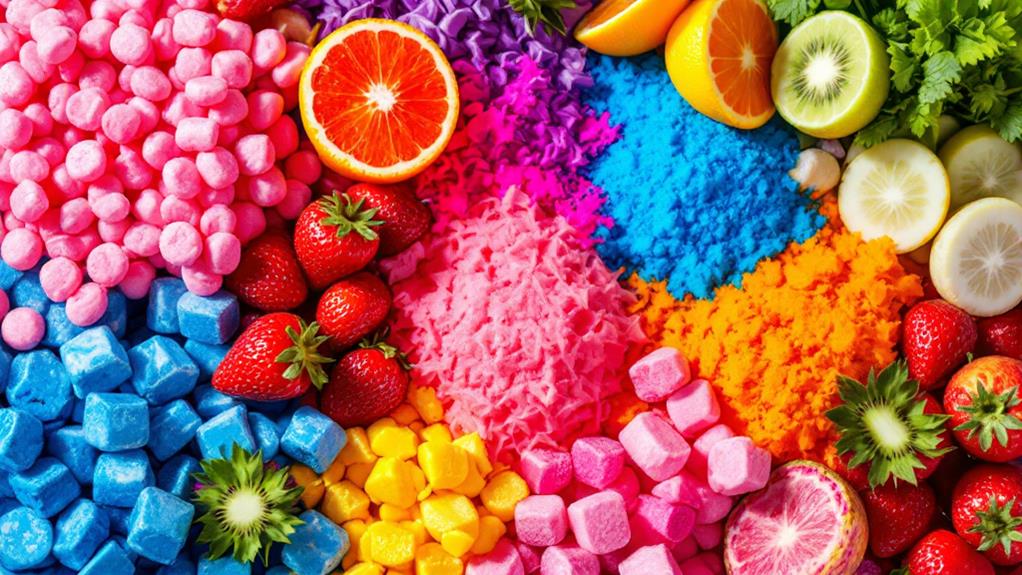
Imagine a child enthusiastically biting into a lively, colorful snack. You might wonder what makes those striking hues so appealing. Often, it's artificial food colors like Red No. 40, Yellow No. 5, and Yellow No. 6, which dominate 90% of U.S. food dyes. However, these food colors raise significant health considerations. Some children may show behavioral sensitivity to these artificial food dyes, experiencing adverse effects that can be concerning.
The European Union takes these concerns seriously, requiring warning labels on products containing certain artificial dyes due to their potential impact on behavior and health. This contrasts with the approach in the U.S., where the FDA hasn't banned Red Dye No. 3 in food, even though it's prohibited in cosmetics because of its association with cancer risks. Such inconsistencies highlight the need for a reevaluation of safety standards.
Additionally, research suggests Blue Dye No. 1 might contribute to developmental delays, further emphasizing the importance of considering what's in processed food. You can make informed choices by using resources like EWG's Food Scores, which help identify products free from harmful artificial dyes, promoting healthier decisions for you and your family.
Impact on Children
As you consider the health implications of artificial food dyes, the impact on children becomes particularly significant. Some children might exhibit sensitivity to these artificial colorings, leading to noticeable behavioral changes. Studies have shown that dyes like Red No. 40 and Yellow No. 5 can increase hyperactivity in children, which is a growing concern for many parents. In fact, the European Union mandates warning labels on foods containing certain artificial colors due to their potential adverse effects on children's behavior and health.
In the U.S., approximately 90% of food dyes are accounted for by just three colors: Red No. 40, Yellow No. 5, and Yellow No. 6. These dyes have been associated with negative behaviors in children, yet the FDA's regulations on food dyes remain minimal. Many of these dyes haven't been reviewed since the 1960s, raising questions about their long-term impact on children's health.
Legislative actions, like California's planned ban on Red Dye No. 3, highlight the increasing awareness and concern over the potential health risks of these artificial colorings. As a parent, it's essential to be aware of how these colors might affect your child's health and behavior.
Reducing Dye Consumption
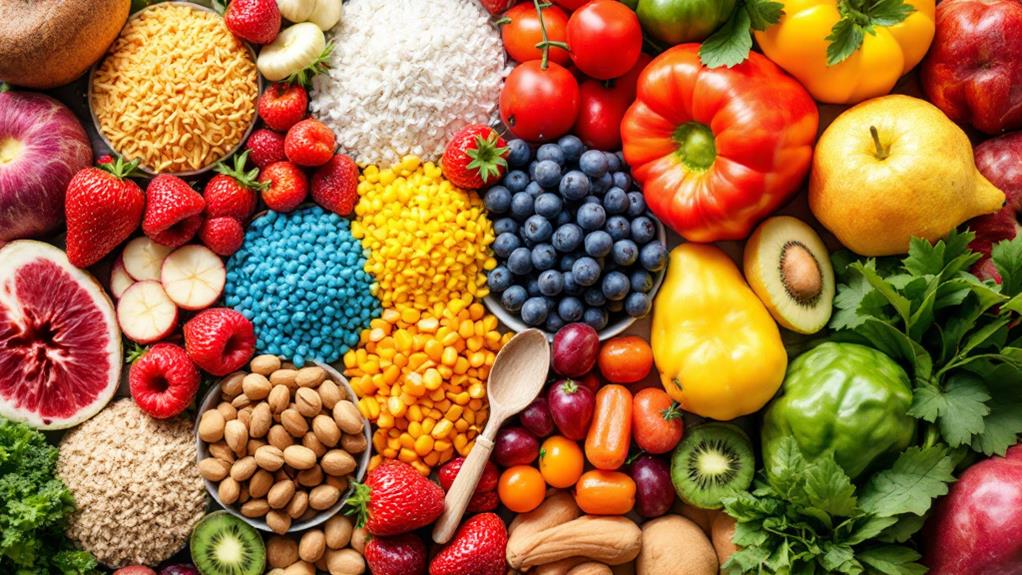
Awareness is key regarding reducing dye consumption in your diet. You can make healthier choices by focusing on the products you buy and the foods you eat. Here's how:
- Read Labels Carefully: Check ingredient lists on food packaging. The FDA requires that food dyes be clearly listed, allowing you to avoid products with synthetic additives. This habit guarantees you're not unknowingly consuming artificial colors.
- Opt for Natural Alternatives: Choose brands that use natural ingredients for coloring, such as turmeric or paprika. These natural additives are used to replace synthetic dyes, offering a safer and more wholesome option for you and your family.
- Limit Ultra-Processed Foods: These foods often contain artificial dyes. Instead, prioritize whole or minimally processed foods in your diet. This shift not only reduces dye intake but also enhances general nutritional value.
Utilize resources like the EWG's Food Scores database or the Healthy Living app to make informed decisions. These tools can help you quickly identify products without artificial dyes, empowering you to choose healthier options. By taking these steps, you can considerably reduce your consumption of unwanted additives and promote better health.
Industry Trends
With growing consumer awareness about the potential health impacts of synthetic food dyes, industry trends are shifting towards more natural alternatives. You've likely noticed that processed foods, which make up 70% of the average U.S. diet, are loaded with synthetic dyes like Red No. 40, Yellow No. 5, and Yellow No. 6. These three account for a staggering 90% of all food dyes used in the U.S. But as you become more informed, major brands are responding by swapping out these artificial colors for natural options like turmeric and paprika. Kraft is one such brand making this shift.
Regulations are also tightening. In California, a ban on Red No. 3 set for 2027 points to a growing legislative push against synthetic food dyes. This trend isn't just local; the European Union has taken major steps with food labeling by requiring warnings on products containing certain artificial dyes. Such measures reflect a global movement towards transparency and safety in what you eat. As a consumer, your demand for more natural alternatives and better food labeling is reshaping how companies approach synthetic food dyes, steering the industry towards a cleaner, clearer future.
Future Developments
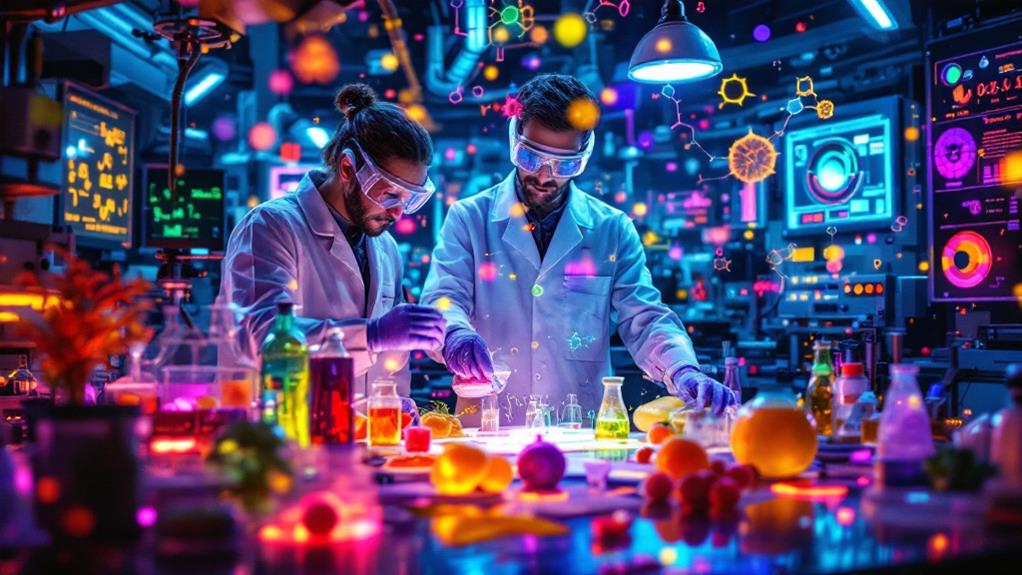
Looking ahead, the landscape of food dyes is poised for remarkable transformation. You can expect thrilling advancements in food coloring technology to redefine how we perceive and utilize food dyes. The development of edible spray paints, like Food Finish, offers groundbreaking ways to apply lively shades, enhancing food presentation like never before. As research progresses, the focus is on crafting safer, natural alternatives to synthetic food dyes, meeting the rising consumer demand for healthier food products.
In this evolving scenario, you should keep an eye on:
- Natural Alternatives: Ongoing research is dedicated to uncovering and perfecting natural substitutes that can replace synthetic food dyes, aligning with the health-conscious consumer's preferences.
- Artificial Production Methods: Experimentation with traditional colors, such as caramel, through artificial means, is underway. This could lead to more stable and economical solutions for food coloring.
- Regulatory Impact: Studies examining the behavioral effects of food dyes could greatly influence future regulatory decisions, shaping which dyes are deemed safe for consumption.
These developments promise a future where food dyes are not only more appealing but also healthier and more responsibly produced, aligning with modern dietary priorities.

